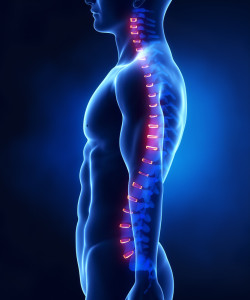 What conditions does chiropractic treat?
What conditions does chiropractic treat?
The scientific literature supports a myriad of conditions that respond well to chiropractic care. Additionally patients present to us with an extremely wide variety of conditions. However the goal of chiropractic is not necessarily to treat a specific symptom or disease. The goal is to improve neurological function so that the body has the best opportunity to heal. Fortunately as the nervous system improves symptoms often resolve.
When can I get my first appointment?
We make every attempt to set aside time to see new patients. Most often you can get an assessment on the same day you call, and certainly within 2-3 days.
How long is a first visit?
First visits generally take 30 – 45 minutes. To save time at our office we suggest you fill out our confidential case history form prior to your consultation and exam.
Prior to your visit with us please fill out your Case History and bring it with you to your first visit. Download the correct form below:
Case History Form – Dr. Barber
Case History Form – Dr. Majeran
How much does chiropractic care cost?
We purposely keep your first visit at $60.00, understanding that people don’t expect to pay a high fee to see if we can help them with their health goals. Subsequent visits are $50.00.
Do you direct bill insurance companies?
No. We do provide necessary receipts to allow you to process your insurance claims.
Will I require x-rays?
In most cases the answer is no. If however during your history and examination we require x-rays we will discuss this with you. If x-rays are indicated they are covered by Saskatchewan Health.
Do I need a referral?
No. Chiropractors are primary health care providers and therefore no referral is necessary. However some insurance companies may require a medical referral to process your claim for reimbursement.
How many adjustments will I need?
The answer to this depends on your health goals. New patients generally have 2 options:
Your first option is receiving relief care until your symptoms significantly decrease or totally resolve. In some cases of advanced neurological impairment and spinal decay complete recovery is not possible. However adjustments in these cases often provide considerable relief. In most cases relief care takes in the range of a few to 8 or 10 adjustments.
Your second option is to take a more proactive approach and elect for Restorative Care. Most people have chronic subluxations that may have been manifesting symptoms for only a short period of time. As a result the majority of people seeking our help require adjustments beyond relief care to attain optimal correction. This type of care requires more adjustments and time while providing a more favorable outcome for your health and quality of life.
Regardless of the type of care you choose we are here to help you achieve your goals.
What is a subluxation?
Joints are designed to move. A subluxation is simply a decrease in movement of a joint. Within muscles and joints are a very high concentration of receptors that provide the majority of stimulation into the spinal cord and brain. When joints do not move through their full range of motion these receptors decrease their firing ultimately decreasing input into the brain.
What causes subluxations?
There are three basic causes of subluxation. Physical causes include sports injuries, motor vehicle collisions, repetitive stress injuries and prolonged postural stress such as sitting. Emotions such as grief, anger and fear can cause subluxations.
How do I know if I have a subluxation?
You can have subluxations and not even know it. Like the early stages of tooth decay or cancer, subluxations can be present before warning signs appear. The results of a thorough examination can show the location and severity of subluxations you may have.
Can I have chiropractic care after back surgery?
Most definitely. In fact adjustments following surgery are often essential due to the biomechanical stress that may occur above or below the surgical site.
Can patients with osteoporosis get chiropractic care?
Of course. When developing a care plan we consider the unique circumstances of each patient. There are many ways to adjust the spine. The method selected will be best suited to your age, size and existing health challenges.
Is chiropractic suitable for children?
Approximately 10% of our practice is children. Parents will agree that our children are spending their formative years differently than they did. Children 8 – 18 years old currently spend in excess of 7.5 hours/day on some form of mobile media. This obviously takes away from physical activity and creates excessive postural stress on their developing spine, supporting soft tissues and nervous system. As a result we strongly encourage a chiropractic assessment for infants, children and teenagers.
Will I need supplements?
Some individuals do require supplements. As a courtesy we offer a wide range of the highest quality professional supplements at minimal mark up.
Has chiropractic changed over the years?
Yes and no. The majority of chiropractors adhere to the philosophy that our profession was founded on. That is that the body is self healing and self regulating and that the nervous system controls and coordinates every one of our estimated 75 trillion cells. Recent advances and discoveries in neuroscience continue to validate chiropractic philosophy and science.
What has changed is the delivery of the chiropractic adjustment. Although gentle manual adjustments are still applied other adjustive techniques utilizing table drop pieces and mechanical adjusting instruments have been developed and incorporated into patient care. These advances continue to make chiropractic care gentle, safe and extremely well tolerated by all ages.
Is chiropractic safe?
The discussion concerning chiropractic safety has been primarily focused on the risk of stroke secondary to neck adjustments. The main concern was that the neck adjustment would cause damage to the vertebrobasilar artery (VBA).
Although an interesting theory, scientific studies do not support this assumption. Research from the University of Calgary provides several significant findings including: 1) The maximum forces/strains on a vertebral artery from chiropractic adjustment are no greater than those recorded during common diagnostic range of motion (ROM) tests regularly performed by chiropractors, MDs and physical therapists. 2) Maximum strains during chiropractic adjustments provide only “approximately one ninth (11%) of the strains required to produce first mechanical failure in the tissues of a vertebral artery. 3) Chiropractic adjustments “results in strains to a vertebral artery that are within the range of strains produced during normal physiologic motion of the cervical spine”. In other words, an adjustment produces less strain than during normal daily neck movements.
Additionally, recent research has provided the first definitive evidence on arterial risk and causation of vertebral artery stroke. Researchers analyzed a Canadian government database that recorded all primary medical care provider (PCP) and chiropractic (DC) visits and all vertebrobasilar artery stroke admissions in the Province of Ontario from April 1993 to March 2002. They report that the very slightly increased stroke risk rate for neck pain patients consulting a PCP or DC is exactly the same whether the patient receives medical care from a PCP or an adjustment from a DC. This is true if one looks at the data at one day, one week or four weeks after medical or chiropractic treatment.
The researchers conclude that the similar but very slight increased risk “is likely due to patients with headache and neck pain from VBA dissection seeking care before their stroke. We found no evidence of excess risk of VBA stroke associated with chiropractic care compared to primary care”. VBA stroke following medical or chiropractic care is “associated with” not “caused by” the intervention used.
Once I start care will I need to go for the rest of my life?
Nobody understands the benefits of proper spinal adjustments as chiropractors do. We are trained in the art, science and philosophy of chiropractic and we have individually witnessed thousands of people improve their health under care. For this reason the vast majority of chiropractors get adjusted on a regular frequency. However as a patient you have options. You may choose to adopt regular ongoing care or you may decide to use chiropractic only during periods when you are experiencing unpleasant symptoms. The choice is yours. We are here to support you regardless of your decision.
References
Haldeman S, Carroll L et al. (2008) The Bone and Joint Decade 2000-2010 Task Force on Neck Pain and Its Associated Disorders; Executive Summary, Spine 33(4S):S5-S7
Herzog W, Symons B (2002) The Mechanics of Neck Manipulation with Special Consideration of the Vertebral Artery, J Can Chiropr Assoc 46(3):134-136.
Haldeman, S, Carroll LJ, Cassidy JD, and the Scientific Secretariat (2008) The Bone and Joint Decade 2000-2010 Task Force on Neck Pain and Its Associated Disorders. European Spine J 17(Supple.1):S1-S220.
Haldeman S, Kohlbeck FJ, McGregor M. Risk Factors and Precipitation Neck Movements Causing Vertebrobasilar Artery Dissection After Cervical Trauma and Spinal Manipulation, Spine 1999:24(8):785-794,
Cassidy JD, Boyle, E, Cote et al (2008) Risk of Vertebrobasilar Stroke and Chiopractic Care: Results of a Population-Based Case-Control and Case-Crossover Study, Spine 33(4S): S176-183.
